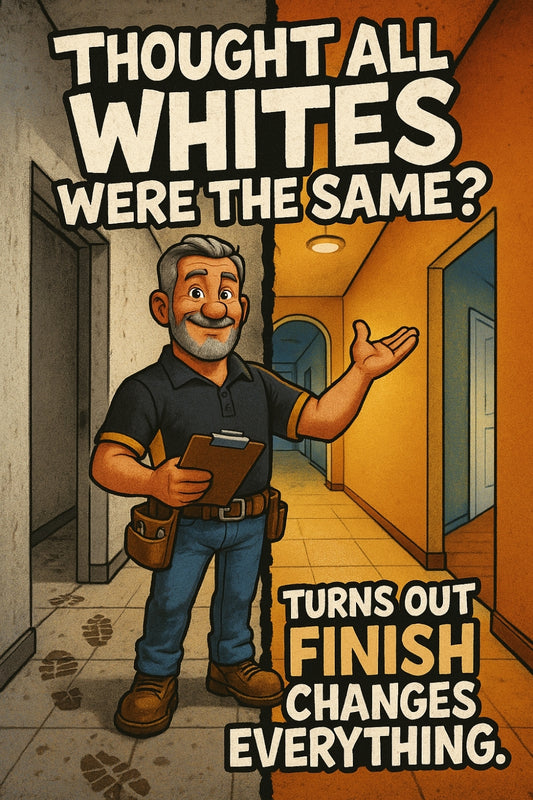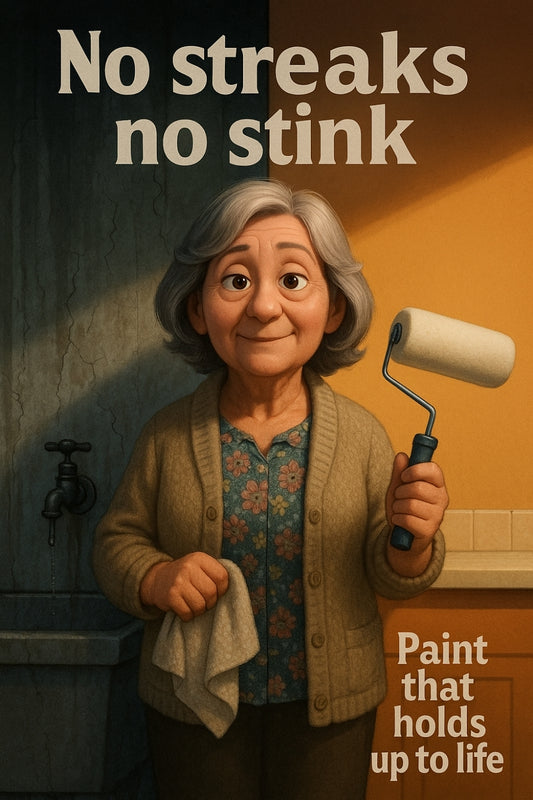
Mistakes to Avoid When Painting a Mural at Home
Share
Mural Magic: How to Avoid the Easy Mistakes When Painting Your Wall Art
So you’ve got the paint, the brushes, and a Pinterest board bursting with inspiration. You're finally ready to bring your blank wall to life with a DIY mural. Painting a mural at home can feel like the ultimate creative triumph. But let me tell you—you don’t want to get halfway through and wish you'd just stuck with one colour and a roller.
After years of watching passionate homeowners chase down their own Reno dreams, I’ve seen all sorts of mural marvels... and a few oops moments too. So before you tackle that big wall with an even bigger idea, take a beat and check out these common slip-ups to avoid.
1. Skipping the Prep – Don't Do It
If I had a dollar for every time someone regretted not prepping their wall properly, I could buy a new ladder for every house on the street. Murals, more than regular painting, rely on clean, smooth surfaces. Spackle over the dents, sand it flat, and please make sure the wall is free of dust and grease. It's like giving your paint the best blank canvas it deserves.
A coat of primer doesn’t hurt either. It helps the mural colours to pop and stick better. That’s where the Haymes Ultra Cover Primer comes in handy—it bonds beautifully to all kinds of surfaces and creates the perfect base layer for vibrant paintwork.
2. Choosing the Wrong Paint Finish
Not all paint is created equal, especially for murals. Matte finishes are perfect because they don’t reflect every fingerprint and brush wobble you make. Gloss and semi-gloss finishes might look shiny at first, but they’re less forgiving and more prone to streaking with large-scale brushwork.
We’ve had families use Haymes Expressions Low Sheen Interior for its buttery smooth coverage and low-reflective finish. It's easier on the eyes and camera lens—and a dream to paint with.
3. Overlooking the Sketch Plan
This one’s a biggie. You're buzzing with ideas in your mind, but winging it on the wall can easily go sideways. Always sketch first. Some folks trace their design using a projector while others go freehand. Either way, put it on paper first—size it to the wall, plan your colour palette, and then grid it out if needed.
Even kids’ rooms art benefits from a solid plan. That happy sun with sunglasses might start looking more like a setting tantrum if it’s drawn wonky and off-center.
4. Poor Colour Choices (and Failing to Test First)
You know that feeling when you choose a paint colour, and you swear it looked better on the sample? Same rules apply here. Always test your colours—on the wall itself, in the room’s daylight. Make sure they work well together and against your base colour.
Don’t forget to factor in dry-down. Paints always dry differently than they appear wet. Using Haymes Artisan Collection Coloured Chalk offers control with rich, decorative tones that hold their own. It gives your mural that “wow” factor without turning into a colour-combo disaster.
5. Wrong Brushes or Tools
Trust me—good tools make all the difference. I'm talking smooth lines, clean corners, and a lot less hair-pulling. For murals, a mix of brushes is the secret sauce: detail brushes for outlines and a couple of short-handled ones for better control in wider spaces.
If you're using stencil work or want to dabble in specialty finishes, keep tools like stippling brushes or even sponge applicators on hand. Unipro Sash Brush is one I often find helps DIY'ers handle curves and corners like a pro.
6. Rushing Through It
Murals aren’t a Sunday arvo kind of job. They're more of a "over a few weekends with good music and snacks" kind of moment. Take frequent steps back to see how things are progressing. Fix mistakes as you see them. It shouldn’t be a race from start to finish.
Layering colours? Let the paint dry before going over it. Prevents bleeding and smudging. If you’ve used something like Haymes Ceiling White as your sky backdrop before your detailed work, you’ll want that fresh, clean base to be bone dry before adding swirls of sunset or stars.
7. Ignoring the Final Touches
That "wow" moment comes from clean edges, tidy touch-ups, and sometimes, a subtle sealant to protect your art. Not all murals need to be sealed. But in high-traffic areas—like kids rooms or hallways—you might thank yourself for brushing on a clear coat later.
When picturing your wall art lasting years instead of months, it's details like these that add both life and professionalism to even the quirkiest mural idea. Whether you're creating a graphic jungle scene or just accenting your entry with colour blocks, the care shows.
Your Mural, Your Masterpiece
Painting your own mural can be one of the most rewarding DIY challenges. You're not just filling space—you're telling a story. Your story. With the right prep, high-quality Haymes Paint, and a game plan, even first-timers can create something brilliant.
So, roll up those sleeves, sketch out the plan, and speak to us at Strathalbyn H Hardware’s Paint Shop if you're not quite sure where to start. We've got the experience, the advice, and the paint to help make your mural something to be proud of for years to come.
Happy painting!
— Candeece

Stay Connected
Follow our Facebook Page: Strathalbyn H Hardware on Facebook



